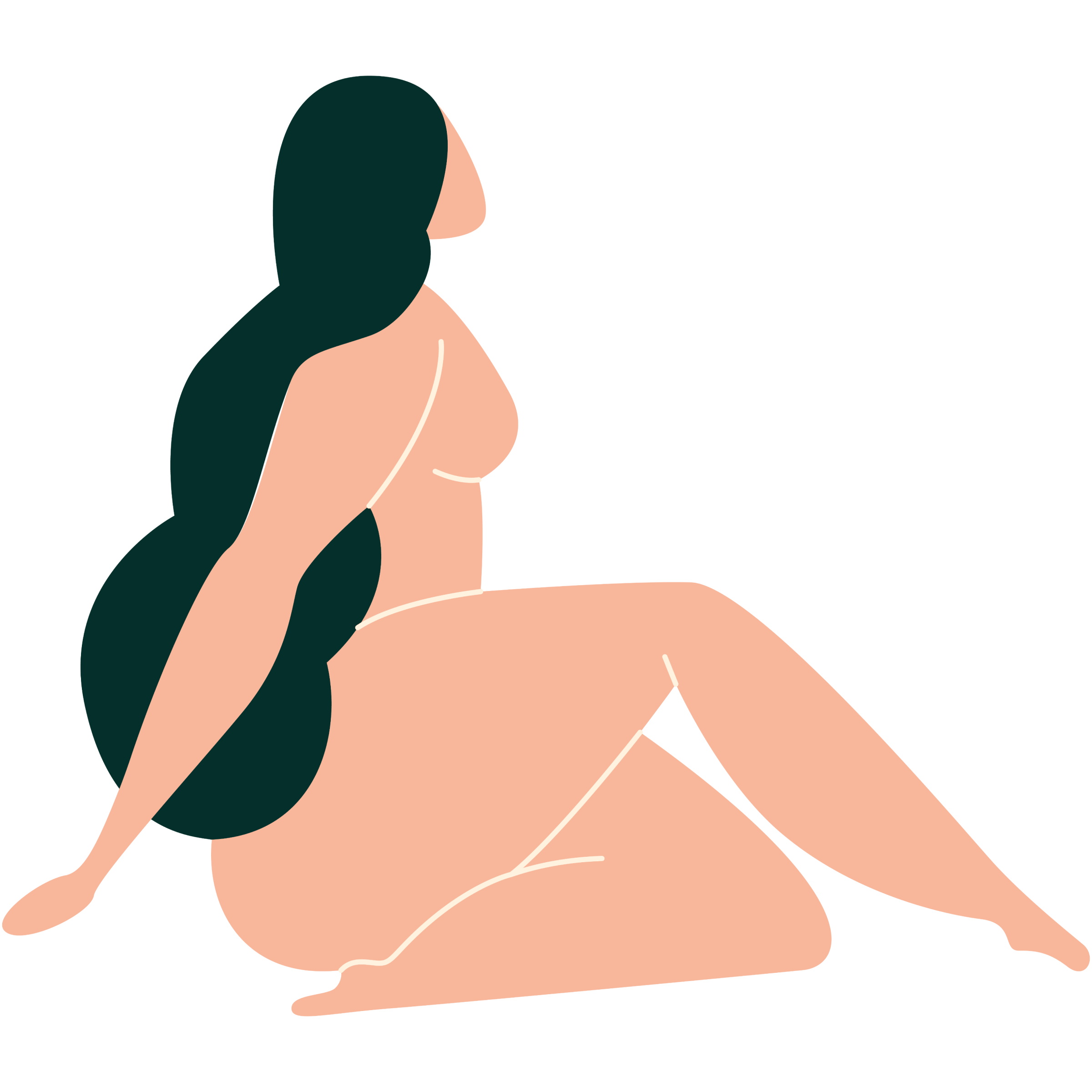
Body
Get to know your body through a better understanding of your anatomy and find the answers to some of your most common questions.

Female pleasure remains a taboo topic in the Arab world. Growing up, we are rarely taught about pleasure, about fantasies, and about the intricacies of the female orgasm. Today, some of us have never experienced an orgasm, and others are in relationships where the sole focus of sex is their partner's pleasure. However, exploring, understanding, and owning this part of ourselves will transform our relationship with our bodies and our partners.
As we always say, knowledge turns the tide and, for many, the first step towards embracing this part of ourselves is understanding it.
An orgasm is a physical reaction to sexual stimulus, which can be itself physical or mental. When a woman is sexually aroused, blood flow increases to her genitals, her muscles tense up, and her heart and breathing rate may also increase. During this build-up, she may also experience sweating, heavy breathing, or quivering lips. At the point of climax, or orgasm, all of that tension is released. It can feel different to different women, but most often it is characterized by a pleasurable release and muscle contractions that can include vaginal contractions. Some women may also experience something called “squirting”, or female ejaculation.
Endorphins are then released into the bloodstream, giving way to feelings of joy, giddiness, and warmth. It’s normal for the intensity of orgasms to vary; you might describe some as mind-blowing or earth-shattering, while others might be more mild.
Clitoral stimulation is the most common way that women orgasm. The clitoris, which has thousands of nerve endings, is extremely sensitive to touch. It is not merely a small “button” between a woman's legs. In fact, it is a much larger internal organ that remains unfamiliar to most people. Think of it as an iceberg, if you will, with only a fraction of the clitoris existing above the surface for you to see.
According to scientists, the clitoris is very similar to the penis in both form and function when it comes to arousal. For instance, both organs become erect when aroused.
The clitoris extends up to 12 centimeters inside of your body. Think of it more as an iceberg, with only a small portion peaking out.
This stimulation can be external (to the glans or along the vulva) or internal (as most of the clitoris lies under the skin and can be stimulated through penetration).

That being said, and while they are more rare, there are plenty of other ways to reach climax. These can include the stimulation of your breasts, the area around your anus, or any of the other dozens of erogenous zones in your body. The golden rule is this: Every woman is different, and the best way to discover what you like is to experiment on your own. If you’re curious to know what turns you on, give yourself an orgasm and find out!
In essence, yes. As we described above, it’s possible to have a clitoral orgasm, just as it’s possible to have a breast orgasm. Another type of orgasm is the cervical orgasm, which requires the stimulation of the cervix (the doorway to the uterus that is found at the very top of your vagina).
Your ability to experience these different types of orgasms is very much linked to your individual anatomy (like how far your clitoris is from your vagina or where you have more nerve endings) and how sensitive your different parts are as a result of that. It’s important to note that where you are in your cycle can also impact the types and intensities of your orgasms.
Women, unlike men, can have multiple orgasms in a row. Have you ever experienced this?
Public Service Announcement: The majority of women do not experience vaginal orgasms. Only 25% of us, that's one in four, reliably experience orgasm during vaginal intercourse — no matter how long it lasts, no matter who the partner is, and no matter how the woman feels about the relationship.
The commonly held belief (thanks to media, the porn industry, and patriarchal society, amongst others) is that orgasms from penetrative sex — or vaginal orgasms — are preferable and the healthier form of sexual expression. As a result, many of us feel that, if we can’t orgasm from vaginal penetration alone, there’s something wrong with us. Sometimes it can feel like everyone except you is having penetrative orgasms, when in fact 70 to 75% of women need clitoral stimulation in order to orgasm.
In addition to that, recent research has found that a vaginal orgasm is essentially a clitoral orgasm as well. The closer the clitoris is to the vaginal opening, the higher the chances of it being stimulated through penetration (remember that the majority of the clitoris is actually below the skin, as depicted in the illustration above).
Depending on who you talk to, this is still highly contested amongst sexual experts. At Mauj, we firmly believe in finding what feels good for you and not obsessing over what you think sex should be like.
The clitoris is found at the uppermost part of the vulva, under what is called the clitoral hood. More accurately, however, that is the only visible part of the clitoris, also known as the glans, as most of it is hidden under the tissue of the vulva.
The clitoris’ primary function is to provide pleasure, with no direct involvement in reproduction. For most women, it plays an absolutely crucial role in sexual orgasm. Indeed, 75% of women require clitoral stimulation in order to climax during sex.
Did you find the answer you were looking for? Is there something we missed? What did you think of this resource? We want to hear from you.
